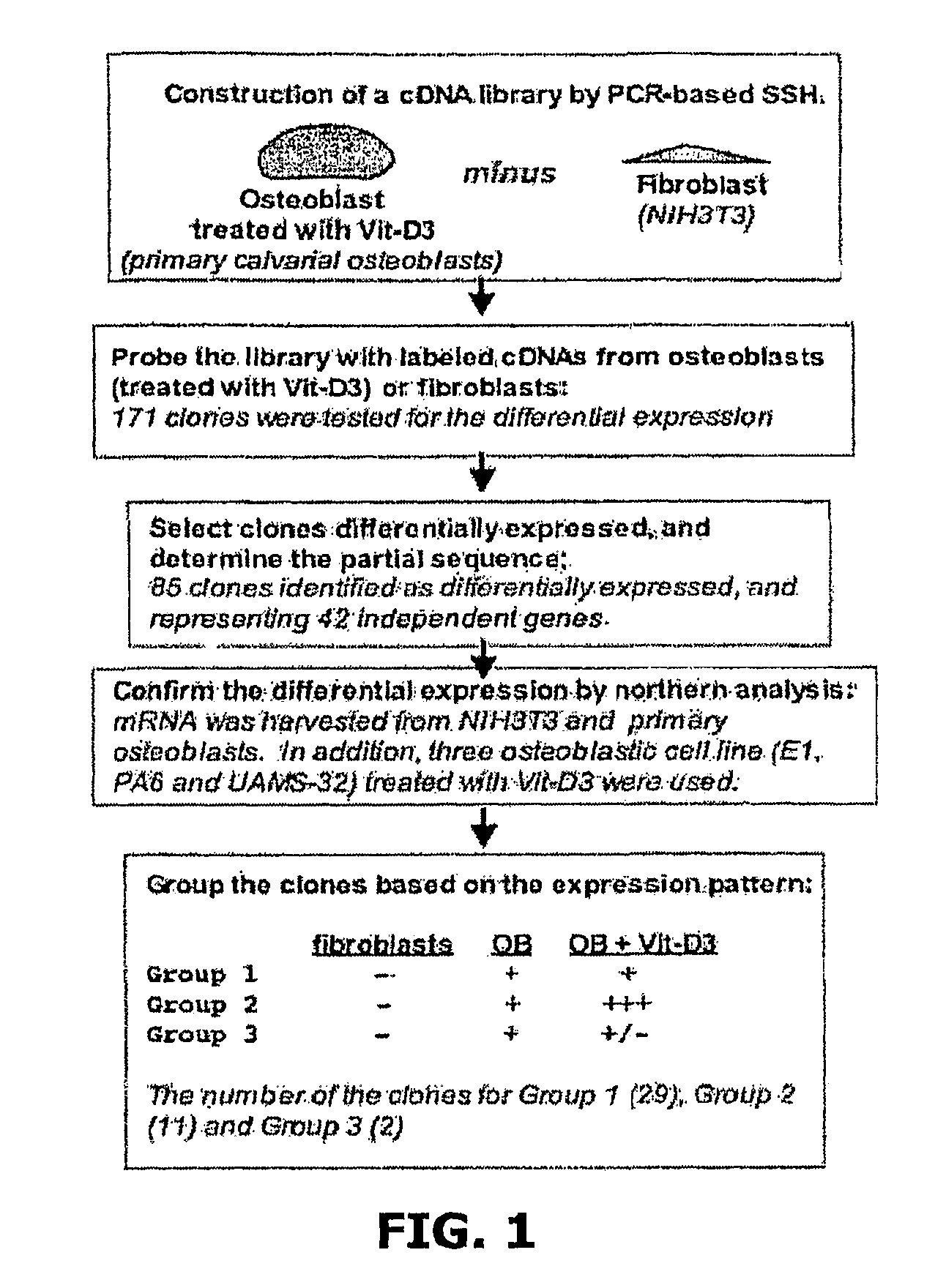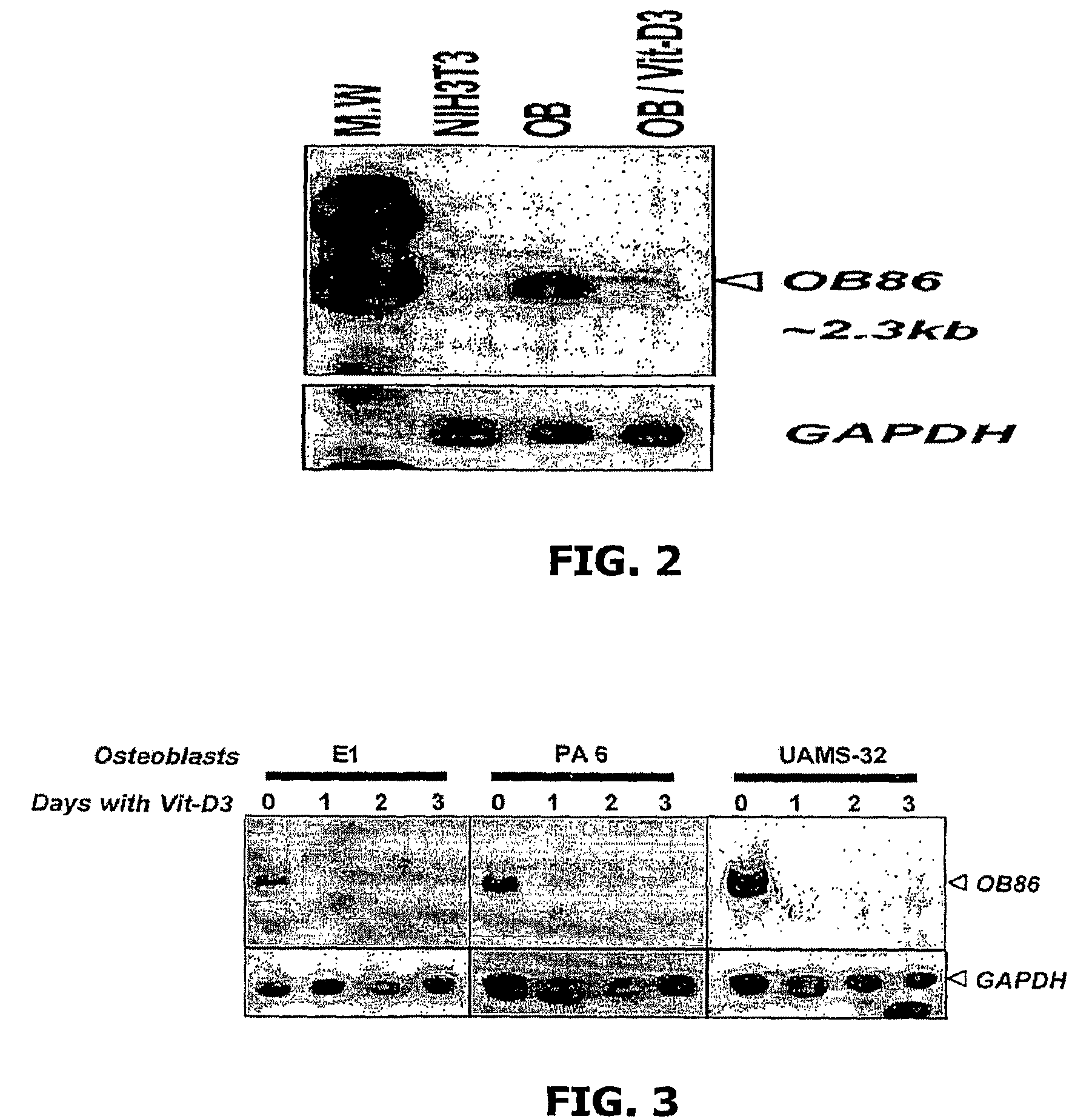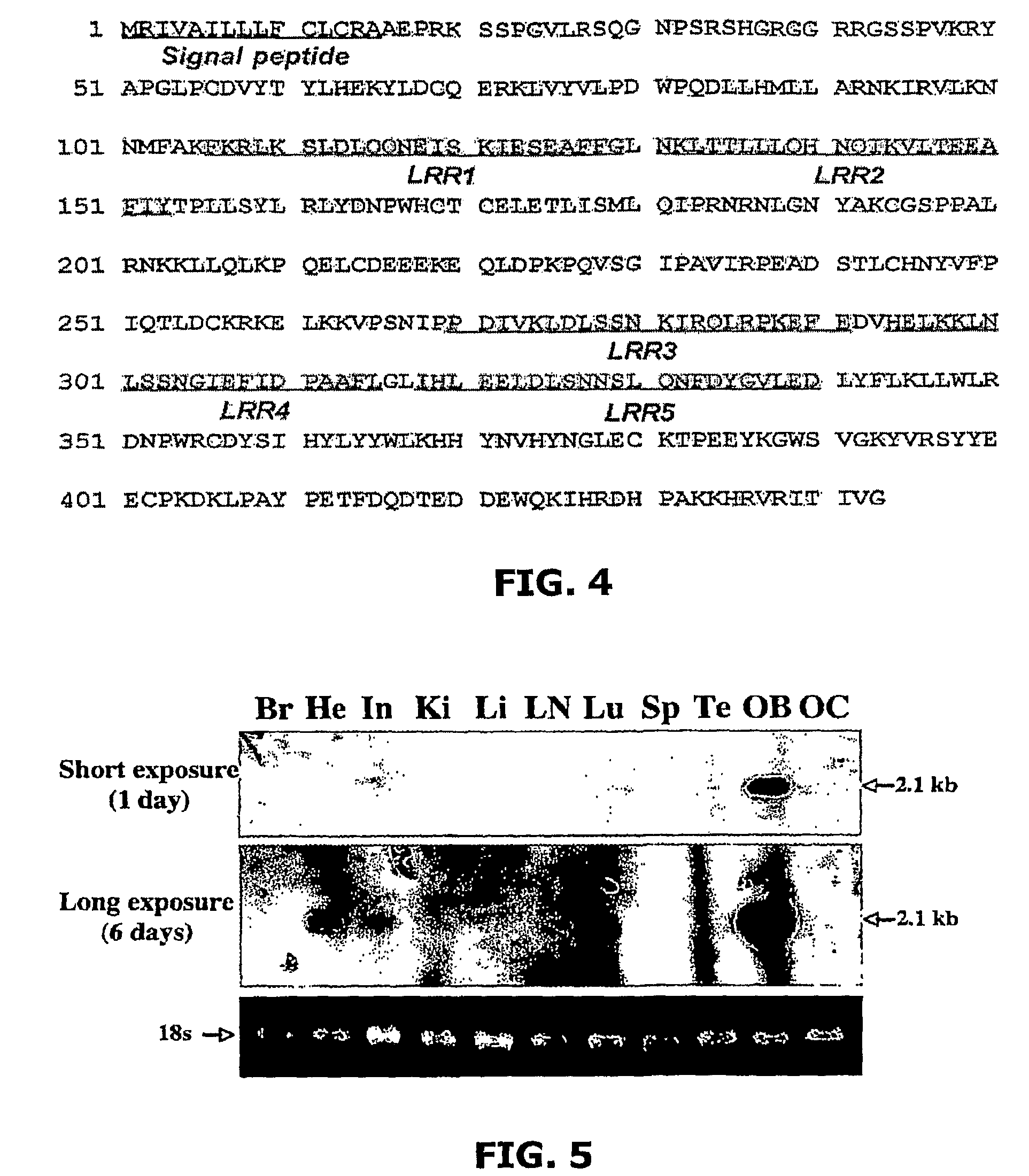Methods for regulating osteoclast differentiation and bone resorption using LRRc17
a technology of which is applied in the field of regulating osteoclast differentiation and bone resorption, can solve the problems of further promoting bone disruption, characterization of inhibitory factors produced in osteoblasts, and suppressed by pro-osteoclastogenic factors, and achieves the effect of decreasing or inhibiting excessive bone loss, and high enrichmen
- Summary
- Abstract
- Description
- Claims
- Application Information
AI Technical Summary
Benefits of technology
Problems solved by technology
Method used
Image
Examples
example 1
[0114]Regutation of LRRc17 expression in osteoblasts in response to osteotropic factors. Since the discovery of the TRANCE-RANK-OPG axis, numerous studies have shown that most osteotropic factors regulate osteoclast differentiation by modulating the ratio of TRANCE versus OPG expressed by osteoblasts. TRANCE and OPG expression is often, though not always, inversely regulated by osteotropic factors. More importantly, pro-osteoclastogenic factors seem to increase the ratio of TRANCE / OPG; whereas, anti-osteoclastogenic factors reduce the TRANCE / OPG ratio in osteoblasts. In addition to bone resorbing hormones, inflammatory agents, such as lipopolysaccharide (LPS), also induces the expression of TRANCE while suppressing OPG in osteoblasts. In contrast, inhibitory levels of TGF-β suppress TRANCE expression induced by calciotropic hormones, while enhancing the level of OPG in osteoblasts.
[0115]Hence, to determine the potential relationship between LRRc17, OPG and TRANCE expression in osteo...
example 2
[0118]Functional analysis of LRRc17 during osteoclast differentiation in vitro. The foregoing determination that osteoclast differentiation is significantly inhibited when cells were used in which LRRc17 is constitutively expressed, was based on two in vitro systems: 1) Vit-D3 induced osteoclastogenesis in the co-culture system with the osteoblastic cell line UAMS-32; and 2) osteoclast differentiation from bone marrow precursors with M-CSF and TRANCE. Although attempts were made to control the expression level of LRRc17 by Northern analysis and by a surrogate marker EGFP, the actual level of LRRc17 protein in the culture could not easily be controlled (as discussed above, LRRc17 is a secreted protein). Thus, a recombinant LRRc17 protein was generated to further test the anti-osteoclastogenic potential of LRRc17.
[0119]A. Generation of recombinant LRRc17 protein: Although LRRc17 is putatively a secreted protein, an LRRc17-Fc fusion protein was generated for purposes of the functional ...
PUM
| Property | Measurement | Unit |
|---|---|---|
| mole fraction | aaaaa | aaaaa |
| mole fraction | aaaaa | aaaaa |
| mole fraction | aaaaa | aaaaa |
Abstract
Description
Claims
Application Information
 Login to View More
Login to View More - R&D
- Intellectual Property
- Life Sciences
- Materials
- Tech Scout
- Unparalleled Data Quality
- Higher Quality Content
- 60% Fewer Hallucinations
Browse by: Latest US Patents, China's latest patents, Technical Efficacy Thesaurus, Application Domain, Technology Topic, Popular Technical Reports.
© 2025 PatSnap. All rights reserved.Legal|Privacy policy|Modern Slavery Act Transparency Statement|Sitemap|About US| Contact US: help@patsnap.com



